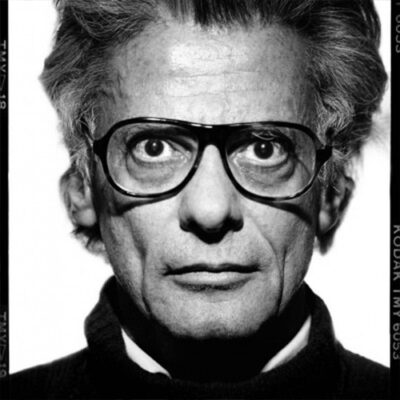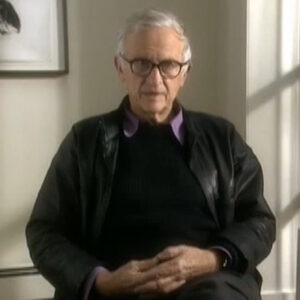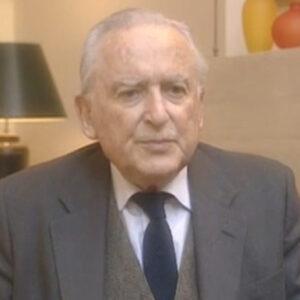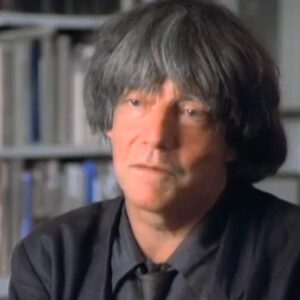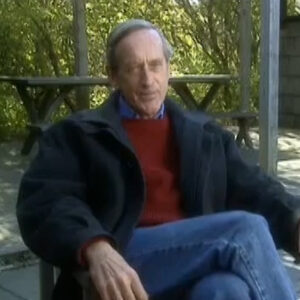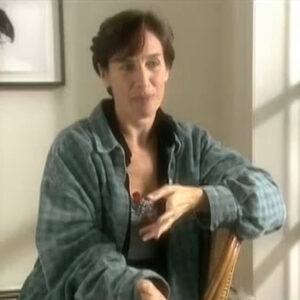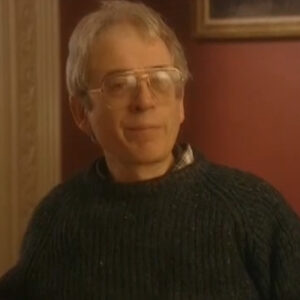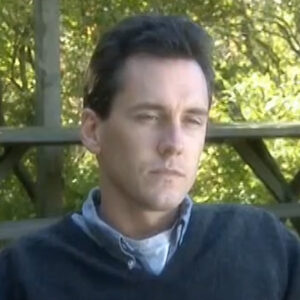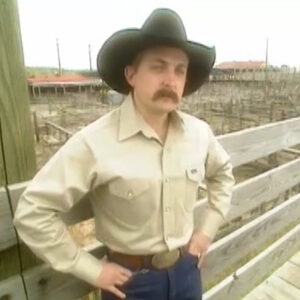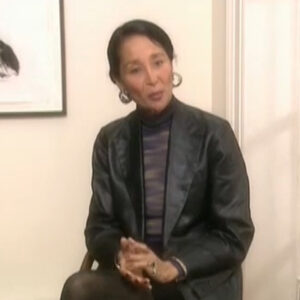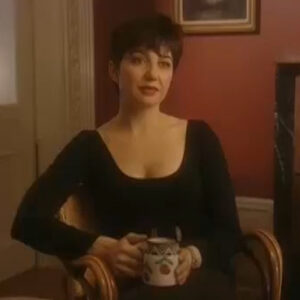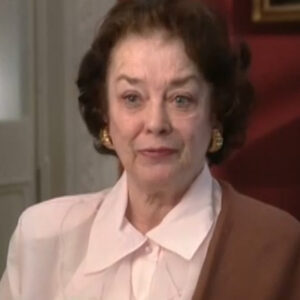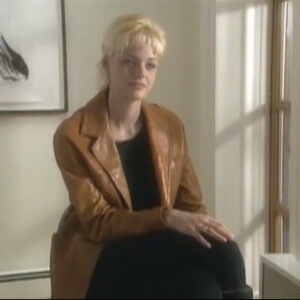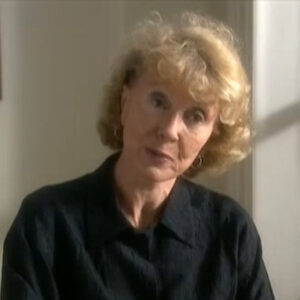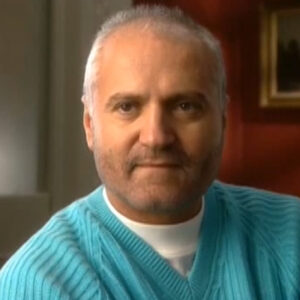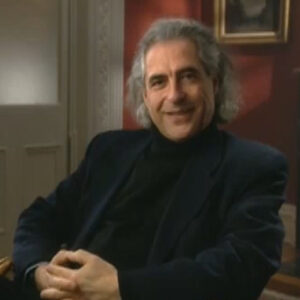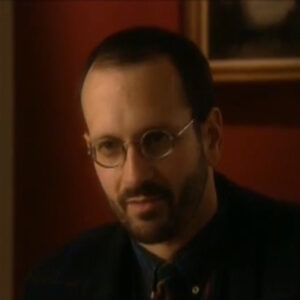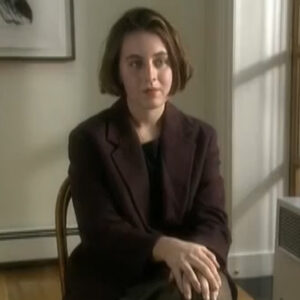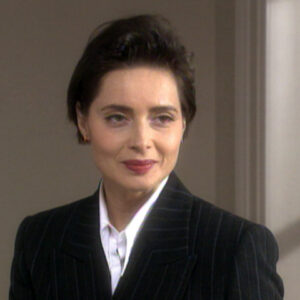Speaker I felt we needed to have pictures in The New Yorker to alleviate the monolithic look of just the type. And when I was working on my dummy for how the new New Yorker was going to look, I found that the only photographer I wanted to use was Avidan. It was his images that I used for the dummy. And I didn’t know that he would want to work for The New Yorker. And I didn’t I hadn’t asked him if he would, but I kept in my search for material to make up a perfect looking magazine. I kept reaching for his images. And it was interesting because having done this and having sort of thought about whether I should talk to him, he then called me and said, let’s talk. I want to be in The New Yorker. So it was a real meeting of desires on both our parts.
Speaker Specifically, what was it about his signature style? Well, the images as you move along. Why is it that you wanted one? What was it about the way these cases?
Speaker Well, what I was looking for wasn’t were images that were chaste and meaningful. And I didn’t want to put hot pictures into the magazine. I could have gone for many pictures that were photographers who were more kind of overtly exciting in the sense of looking for effect. What I love about Dick’s Pictures is that they are pure in their intentions.
Speaker They are powerful. They are lingering in the mind. They are true.
Speaker There’s a kind of search for truth and his pictures that I think is right for The New Yorker. I wasn’t looking for a kind of glossy magazine. Look, I was looking for something much more durable, something that would actually be art and yet have a power that was not rarified. You know, a lot of a lot of artistic so-called photographers are kind of excluding. But what’s wonderful about Dick is he has an enormous sense of what we want to look at in a strange way. I mean, he’s not looking to do pictures that kind of exclude he’s looking to do pictures that are just telling the truth. And he’s a brilliant journalist. And the other thing that I felt keenly about, Dick, that in a sense had been under exploded in the last 10 years because he’s been out of magazines for so long that he’s a brilliant journalistic, has an amazing sense of what he should be photographing when and he’s always been there at the time when something exciting was happening, whether it was the civil rights or whether it was anything to do in the performing arts. He was always right there on the cutting edge of when he should be taking that picture. And unlike a lot of photographers who are kind of passive couch potatoes, who sort of wait for their editor to phone and say, will you take a picture of X dick? He’s always pushing and pushing and reading the papers like a journalist and thinking that he should be there at the age of 70. He has more of a sense of the right guys than any of the young photographers that I work with.
Speaker He’s not asking for a favor.
Speaker But as you became aware of his work a long while ago, was there one particular series of images that just moved with you? You thought about his work, you flowed into your life?
Speaker Well, one of the pictures that I loved most was his photograph of W.H. Auden, which we used in the magazine.
Speaker There’s a kind of.
Speaker Again, a truth to the photographs that I found enormously moving. He just captures AUDIN in the snow in New York. There’s a kind of innocence to him, a kind of sweetness. It just it captures everything about the man and his work in a way that really moved me very much. Of course, there are powerful portraits like the Windsors, which again, you know, the classic magazine photograph, the power of that. The way it tells the entire story of a marriage. It’s not just a picture of a couple at that minute. It’s a picture of the entire situation, is what I found remarkable about Dick’s images. I think one of the pictures that he did for us that I like most is one of Alger Hiss. That came about simply because, in fact, we had a piece coming out of his. The whole controversy had started to be aired again. And we have the right attorney here who is our son on the staff. I asked Tony if you’d write a piece and I called back and I said, would you do Alger Hiss?
Speaker And what’s interesting about Dick is he knows immediately the kind of picture he should be taking. He immediately said, yes, he needs no persuading at all.
Speaker When he immediately sees that this is the kind of picture that he must take. I think he felt that Alger Hiss was such a historical figure that there was so much complexity and so much that whole atmosphere of betrayal and mystery and so on that surrounds his would immediately make an avid and photograph. And so he said, yes, instantly. And Alger Hiss was was put into a taxi and sent right over to Dick’s studio. And within two days, the picture was with us actually within a day. We were going to press that week. And I think it’s an extraordinary picture. You see this very old man at the end of a life of tremendous tragedy. It has. It has real sadness to it and a real magic. That photograph, I was in love with it as soon as I saw it. And Dick also knew it was very good. I mean, one of the things I love about Dick is he. He’s his own editor. He knows he’s ruthless about himself and he knows what is his best work. And he has absolute conviction about what is a great photograph and what isn’t. And he’ll be unnecessarily derogatory about pictures that he doesn’t think are the best photographs. Even his not so great photographs are better than most other people’s photographs. But he doesn’t know when he’s taken a great photograph, as we do with the magazine. This picture was just a great photograph. You knew it had to be in the next show or the next book, and indeed it was. He put it into his into his book. I didn’t ask. I mean, the thing about Dick’s Pictures is they don’t always please. Because sometimes they’re too that to bear in terms of what they reveal. But I think he thought it was powerful. I don’t know what what his himself felt about it. It’s just sometimes a little unbearable to see what Dick sees in your own face.
Speaker How about the experience of working with the office? Was it your best control?
Speaker Well, he’s a dick is is a wonderful collaborator and an a maddening collaborator in the sense that he well, he he is tremendously enthusiastic, a great journalist. Ideas come pouring out of every five minutes. His navel is plugged into, you know, the winds of change. And he absolutely knows what he should be doing every day. He has far too many ideas of what he can do. He over schedules himself to death. He is continually double booked and travel booked with trying to kind of produce his show, produce his book, produces his things for The New Yorker. When you call him on the fact that he’s ever booked, he’s instantly turns it around and makes it your fault. Well, she’s brilliant. And to me, it never occurred to him to actually admit that this is, in fact, about being triple booked. However, what I love about him is he goes from huge flights of grandiosity and hubris to complete sort of abject human self, berating self-awareness, which I love about him. And one day he’ll be king of the world. Don’t bother me. I’m on top. Just get out of my face, you know, trying to organize me. I know what I’m doing. And then the next day, he’ll be saying, you know, I just that picture just wasn’t good enough. It was just ridiculous. I’ve made a mess of this. I have a schedule myself. I need a vacation. And I loved that about Dick. That there was a very sort of human quality to his to his flights of hubris. And he’s very humorous. You know, he’s very funny about it. I mean, he knows. He knows. He knows himself in a way better than anybody I’ve ever met. And he’s his perfectionism and the way he pushes himself. It’s very taxing for everyone around him, but it’s also very stimulating. He makes us go to the next height all the time. He made me into a far better editor than I ever have been before because he just wouldn’t accept anything less than the best. Frankly, when you’re putting on a magazine. You have to get it done. And as a part of me, which just wants to just get it done. And Dick will never let that happen. It may snarl up the works and it may mean that you don’t get it when you want it, or it may be that you don’t get everything you want when you want it, at any rate. But the fact is, what you get is gonna be better than anything else. So you may as well somehow learn to work with it. I’ve never regretted it ever. In fact, we’ve had very few fights in a sense, because we have both been locked into trying to get the best.
Speaker The only fights we’ve ever had really are about when he has scheduled himself to be in Germany, in New York in the same week and then suddenly realizes that he can’t. I mean, that’s that has sometimes provoked tension. But I find I mean, he faxes me 15 times a day when he’s working with me.
Speaker And, you know, they will go from anything. The kind of things he will write to me are.
Speaker Quite a minute. Just a minute.
Speaker I can read it. Come on.
Speaker Okay. Okay, Tina, dear, we’ll do just that. Sorry. Tina, dear, we’ll do Jasper Johns immediately. The Balanchine layout is exactly the prototype. I’ll also do the Jack Kennedy before Wednesday, and I’m thrilled to do. Diana Trilling Could talk of the town ever have a journalistic piece in it? Attached is what I did the night Kennedy was assassinated. And then this theater and young people, writers, musicians and politics. This is also glorious. Tina, dear, I’ve got a little idea about Eustace Tilley. P.S. From my pantheon of alcoholic Rex, I’ve always wanted to photograph Peter O’Toole. Any interest rate dinner, swordfish or chicken? Bad news. The Murray Kipling’s photo shoot was a real failure. It’s an imitation Avidan and I’m sorry, Tina, but Stephen Sondheim matches aren’t. Murray’s work is not a good subject for me. He, like Jerry Robbins and Edward Gorey, hides his secret behind his beard. Can’t we start upping the ante round here? Why didn’t somebody send me to the funeral at Redhook? Tina, please. How will I get to know the entire staff of The New Yorker? Imagine if I’d been with Alec Wilkinson when he did the sugar cane workers. By the way, I’m searching for information about Eastern Europe, politics, culture and areas of visual interest. Also areas of interesting ethnicity in America. Which, Ed, do I speak to about this? I mean, that job description we never fill because Dick’s demands and what he thinks and that they should know in the space of a day. No, there isn’t a person on this earth who could Isarel dark squares.
Speaker It’s hard to do it when you don’t.
Speaker Okay, sure. Okay.
Speaker Well, working with Dick means a kind of torrent of faxes arrives every five minutes. In fact, I have a special speed dial on my fax now for sort of into into interchanges with Dick. The kind of thing he’ll say may well say Tina, dear, will it.
Speaker Well, sir, it’s very it’s very hard to read this tiny print. I have to do that again. I’m sorry. How much do I have to do? All of it. Okay. Let me see what I can to find a better one to start, because it’s very hard to do that one.
Speaker OK.
Speaker Do people know who Jasper Johns is and all that, I think it’s OK. OK. You never know with television. OK. We’ll start again working with Dick.
Speaker There’s a kind of torrent of faxes that arrives every two hours. I have a special speed dial on my fax for interchanges with Dick and he’ll just his faxes, they just come right out of the air as if he’s in the middle of a conversation with you and they’ll start something like Tina, dear, I’ll do the Jasper Johns portrait immediately. The Balanchine layout is exactly the prototype. I want to do the Jack Ahmedi before Wednesday and I’m thrilled to do. Diana Trilling.
Speaker Yeah. Okay.
Speaker Or I could stop this. Is it better to start with the Reverend Sharpton is on his way to the studio in a taxi, as it should. I think it’s easy to say why did we do that? Because I think it’s funny. Working with Dick, it was a kind of torrent of faxes that arrives every two hours. In fact, I have a special speed dial on my fax machine for interchanges with Dick. The kind of thing he’ll do is he starts his faxes in mid sentences if he’s in the middle of a conversation with you. And he’ll say something like. Tina, dear, the Reverend Sharpton is on his way onto my studio in a taxi. And you’re supposed to just get get on to the ride and just listen.
Speaker Put your back and forth.
Speaker Yeah, I shoot off my faxes back and forth, and usually they’re about cajoling, begging, wheedling, throwing bouquets, because frankly, when I get a dick picture, it’s pretty fantastic. And any irritation I might feel about the process is usually dissolved when I see this extraordinary image laid out on the page and I’m full of awe.
Speaker Is there one particular series or is this the sort of drawing because of the process?
Speaker Let me interest was just along for the picture.
Speaker Well, I think that the project that was Dick’s most ambitious for The New Yorker so far anyway was his portfolio of the Kennedy cabinet that we decided to do for the anniversary of Kennedy’s death. Dick, who had lived through so much of that period with his camera, know ready in a sense, felt that it would be a wonderful idea to photograph all the people who’d been part of that vanishing era of Camelot.
Speaker The clerk, Cliffords. And the morning hands and all of that group of Kennedy friends and advisers from Dick Goodwin to, you know, from the speech writers to the to the advisers, really. And it was a very big project and it was conceived very late. In fact, I had the original idea to do something relating to the candidates. And then together we developed it into what it became. But the idea I remember having talking to him in a traffic jam from my car on the way to the Hamptons in June, and we were planning it for the October issue, which was the kind of time with his own show, which started then. And Dick had wanted to do a big portfolio at the time of his own show, and we couldn’t come up with an idea. And then this idea happened. And as always, with Dick, once it’s the right idea, he instantly lucked into it and realized it was the thing he should be doing. And that gave him. He was about to take off for Montauk, where he has a house in Long Island to have an entire I’m arresting. He’d finished his show, basically most of the stuff he was gonna put in it anyway, he’d finished his book. He was about to set forth on a giant a promotion bender. And the idea was he was going to rest in Montauk for the summer. Well, typical of Dick, far from resting in Montauk. He then took on this enormous project, which was to photograph. I think it was 30 or 40 people in the space of six weeks. And he went into overdrive and literally did sometimes as many as two shoots a day for the next six weeks. He completely gave up his summer. He worked closely with Susan Malcolm Deti, Washington contributing editor, who is a brilliant producer in terms of getting people to do things. And with Susan getting the people to say yes to sit for him, he literally flew all over the country taking these pictures from the Kennedy compound to California to Washington to New York. He just simply across the country taking these pictures. And when the pictures were in, the most remarkable thing about it was there were many, many great portraits. There many, many great portraits. And halfway through, he called me and said, Carol faxed me, as he always does, saying, I’ve decided that the pictures are no good. They’re just not up to standard. I want to scrap the whole project. And this was not Dick being kind of. It’s sort of, you know, doing something for effect. He really felt that he’d seen the pictures and he didn’t think they were good enough. And I said, you know, before he made that decision pass, we could just look at them together and really decide that this wasn’t just a kind of excessive reaction. And we looked at them together and there were, I thought, four or five really remarkable pictures. He was only halfway through. And he talked about what he was going to do next. And, you know, it was quite always there were some great shots there, but there were some, you know, that he felt he he hadn’t had the time to do enough. And it was really that kind of process. Then the second round got better and better. You know that by the time all the pictures were in, he’d done his own editing and sifting. He’d had to go through this very kind of depressed state where he thought he didn’t have anything to then push himself in the next batch of portraits to do even better. And I was just really very impressed that he was willing to give up his entire summer on a project and then decide it wasn’t good enough. I think that’s very unusual. We also talked about doing a cover, perhaps with a photograph, because we’ve never done a photograph cover at The New Yorker. And I’ve I haven’t yet and I don’t think I probably want to. But obviously, if I did one, it’s much more likely that I would do one by Dick. So we dummied up a cover of the picture taken on the night that Kennedy was assassinated of a woman holding up a newspaper saying Kennedy shot, which we thought was a possible cover for the whole issue. But when we looked at it again, it was the first to say, this isn’t right. This doesn’t work. This is this makes The New Yorker and another magazine. I don’t want to do it. And again, I was very impressed because, frankly, many, many photographers would only have in their minds. I’m going to be the first picture on the cover of The New Yorker. You know, I’m going to I’m going to be the one to do this. I’m going to get a tremendous amount of attention for the fact that my picture is the one on the cover of The New Yorker. But Dick is has got such a pure sense of form and such a respect for The New Yorker as a title. He really understood that this wasn’t the right thing to do. It wasn’t. And when we we have spent, say, the Friday looking at it and over the when we’d left it and over the weekend, I’d come to decision it wasn’t gonna be right. And I slightly dreaded having the conversation on Monday and say that, you know something, we’ve got enthusiastic, but I don’t think it’s The New Yorker with this picture. And he was the one who called me and said, it’s not right. We don’t want to do that. And again, I was very impressed. Here he is. He’s such a kind of pure judge of his own work and such and such a great artist. No question that he really is only looking for the best, the best, the best. Which means it has to be the best of its form and in its form. He’s a great magazine man. He will choose the right thing for a magazine. But he also it might be a different image to the one he would choose to hang on the wall for show. But he is absolutely aware of the differences. He can he understands what makes a great advertising photograph, what makes a great magazine photograph, what makes a great photograph or a book or a show. And he’s totally confused about what all those things are. He’s really able to switch in and out and respectful, which is really remarkable in the same way that Balanchine could could choreograph tap dance, you know, or or classical ballet or modern dance. He understands the difference in form. And a lot of photographers don’t they see it. They try to sort of follow their advertising work off as art in a show. You suddenly see, you know, an advertising photograph hanging on the walls of a gallery. It would never do that. He he’s very clear about what is art and what isn’t.
Speaker People feel passionate.
Speaker Compromise work. Why doesn’t Chris?
Speaker Well, it’s a very pessimistic vision of humanity, really. I think it’s got darker as the years have gone by.
Speaker And I think some people find the work just too strong and too unsettling, really.
Speaker It’s like being written about by Janet Malcolm. You know, it’s it’s hard to see yourself sometimes in that way. But I have never seen Dick looking for cheap effects. I have never seen him looking to nail somebody. He doesn’t do that.
Speaker He he really he’s able to be to respond to people as people. He’s he he’s a very, very open and responsive man. He he laughs. He’s amused. He loves people.
Speaker He’s not a cruel person at all. He is a very loving and generous person, actually. And I think that he responds to what he sees. But he is he’s a very truthful person, too, and he’s not able to lie about what he sees. And I think when he gets behind the camera, he will tell the truth about what he sees. And it may simply be a question of what he sees in that face that day in that way and that adaptix la moment. And it may not always be the kind of thing that somebody wants to show, but it’s real and he sees it. And I think it doesn’t always please. I mean, one of the pictures that he’s that he got a lot of flack for at the time was his picture of Dorothy Parker. And it’s shocking to this day that photograph when he showed that to me. I told them we had a piece coming by Joan at Coachella about Dorothy. And I said, Daddy, how do you photographed her? Because the amazing thing about Dick is, I mean, he seems to photograph everybody. I could hardly believe that he would have been around a photograph Charlie Parker and have sort of the envelope. But he was and did. And it’s a shocking picture. But actually, as it happened, it was really the picture of the woman that Joan Acocella had described. I mean, the fact is that Parker was a tragic figure at the end. She was a lost, ruined soul. And people don’t like to remember in that way. That’s the face he swore up that day. She came to his studio and people felt that she’d been in some way cruelly abused. But the fact was that Parker herself was an acerbity cruel Tom, and he took the picture of the woman that he saw. And to this date, I think it’s a very chilling photograph.
Speaker Relationship has changed. How is change wise?
Speaker Well, we’ve been together for two years exclusively and we are original arrangement was that we would work together exclusively, that he would be the only photographer. And that’s worked very well for two years. But there came a point when for both of us, I can’t not have a photograph if he can’t take it. And he’s so incredibly busy in his schedule that it seemed impossible to to to force him to try to be the, you know, to be there. And it quick. I couldn’t. And he didn’t want to anyway. And also, I think he wants to use this last kind of great sort of photographic period of his life to only take the pictures he wants. He doesn’t want to just take a picture that we need. So we’ve agreed that we’ll sort of widen out. He’ll still take pictures for us, but it will be on a more limited and he will take the pictures if he wants to take. And if I have a picture that I need, I’ll be able to use another photographer. But I have to say that I haven’t yet done so really, because I can’t quite bring myself to be unfaithful to Dick’s Pictures. They don’t look as good as I’ve been about to use other photographers ever since I’ve been free, which is about six weeks or two months. And each time I’ve laid it out on the page. I’ve I’ve ended up using it more or using a drawing. I have not found myself willing to sacrifice what he brought into the magazine, which has a certain purity and strength that no one else seems to quite be able to cap. So it’s it’s hard to to find myself in that situation. No one gets very spoilt working with Dick.
Speaker It’s the last question to go back to the issue of control that comes up again and again and people describe the experience of working with him. And say. You know where it’s going, still raise that ratio, quotas are what helps makes the work so great. How did you experience it? And what does that control really mean in terms of working with him? What are the areas of control? It’s conform to this.
Speaker Well, I think Dick is is hypersensitive to the notion that people are kind of using his work to do something for their pages or their I guess it’s after a lifetime a sense of being before he was very famous. He was not able to control what happened to his work. So he would find himself in a situation probably when he was working at Vogue, where he felt that he’s he’s the best picture wasn’t chosen or that he was asked to do something he didn’t want to do. And now he’s extremely famous. He doesn’t see why he should be in that situation anymore. And he sees himself as protecting his legacy and his his view of the world. And I understand that feeling. I mean, sometimes he’s a little overly sensitive to that and feels wrongly that people are trying to kind of take advantage of his talent, whereas, in fact, all they are is trying to collaborate. And that’s that can be very difficult. We haven’t had too much of a problem on it, largely because I see things I usually agree with him that in fact, I think he’s right. Most of the time it’s only difficult when I feel I have a journalistic idea and he feels somehow that he wants to approach it in a different way than is at odds with the magazine, for instance. I had an idea to do something about the kind of basically the kind of American trash era that we’re in right now from people like the O.J. Simpson lawyer to people like Howard Stern, who seem like a very interesting series of portraits for Dick and. Dick kind of seized on that and then told me that I that he was gonna be his next big project and he was gonna take him three years and basically I should sort of get out of his way. And it was upsetting only because it actually was. Was the idea that came out of the magazine. And I thought we were going to collaborate on it for the magazine.
Speaker And all of a sudden it was it was the I was the problem. In a strange way. But he you know, we’ll have a conversation like that. And 24 hours later, he was.
Speaker I know I overreacted and I’m sorry, you know, so it’s not as if he’s a person who doesn’t understand that he has this this thing. He he does. And and I’ve never found him. We never have an argument that’s lasted more than 24 hours.
Speaker It was one particular quick phone calls, people asked me, did you? No, I didn’t. I was surprised. What was that? No, I was just because they found the article. Braves pitcher deeply upset. Was a darknesses character.
Speaker Interesting. How interesting. I hadn’t heard that. Actually, I was very interested in. Did. Did you tell Dave that was it. What did he say? He wasn’t. He wasn’t. He wasn’t. He wasn’t interested. You know, I know he wasn’t. That was the kind of picture that he doesn’t wanna take, you see. And I thought the picture was very, very powerful when I saw it. And that’s that’s that’s exactly the kind of thing that it will say, be dismissive of it. But I think he sometimes doesn’t realize how powerful his camera can be almost at times. You know, that that she’s showing something that he didn’t realize sometimes that he showed it was a very powerful picture.
Speaker Maybe, just maybe you should read it is. OK.
Speaker I think that Dick makes a big mistake in really almost repudiating his fashion past and his glamour side. He seems to feel. I think largely because we live in a society here which is so puritanical and judgmental of the so-called frivolous world that Dick has been made to feel in review after review that somehow or other, his enormous, extraordinary talent for taking pictures of fashion and of the glamour world are in some ways a lesser talent. They somehow make him, as it were, a kind of Sunday painter. This is the fault of the critics, not Dick’s work. And I think it’s a real shame that Dick will not accept that part of himself with joy. He really is almost afraid these days to take a picture which has about the world of fashionable glamour. He feels that somehow his seriousness is on the line every time he does so. And it’s a mistake. I think it was a mistake that he left fashion out of his show. I think he’s trying to deny a part of himself. That’s some of his best work has been done in that area. He should not be ashamed of it. These are great works of art that will last forever. And I wish that he would accept that part of himself with with with pride to the fashion.
Speaker This wall just feels for as soon as there’s your honor.
Speaker I think the photograph of Stephanie Seymour lifting her dress. Yes. Sorry. I think with a photograph of Stephanie Seymour lifting her dress shows that Dick is still on the cutting edge as a fashion photographer. He doesn’t really do much of it anymore. But when he does it, he’s better than anybody else. That picture is a wonderfully ironic, viciously funny take on the world of glamour. It’s really taking the the one band shot, making it full-frontal, literally. It’s a wonderful comment on these sort of prudishness. On the one hand, and exploitation of on the other hand, of fashion editors today, I think shows that he’s right out there, still on the edge with his fashion work.
Speaker What is sincere about his contribution to fashion, separate specifically from other fashion photographers? So how do you know what to do? What singer?
Speaker I think Dick’s fashion is singular for its imagination. It’s its sense of surprise. It’s almost dangerous feeling about you’re not quite sure what’s going to happen. He pens. Photographs are very beautiful, but they’re very still they’re very rare things to be admired from a distance. I think Dick’s Pictures, you you’re completely involved with them. You know, you’re amazed. Your your your your ravished. You’re excited. He has a wonderful sense of glamour. He is really understands it. He loves women and it shows in his pictures. I don’t think anyone has ever been more exciting as a fashion photographer than Dick when you were growing up.
Speaker Did you read those fashion magazines? Those images?
Speaker Those images just ravished me. They made me want to be in the world of glossy magazines. The world of Harper’s Bazaar with Dick’s images. It was those pictures, what I saw them that made me just longed to be in the world of glossies. And no one has made me feel like that since.

